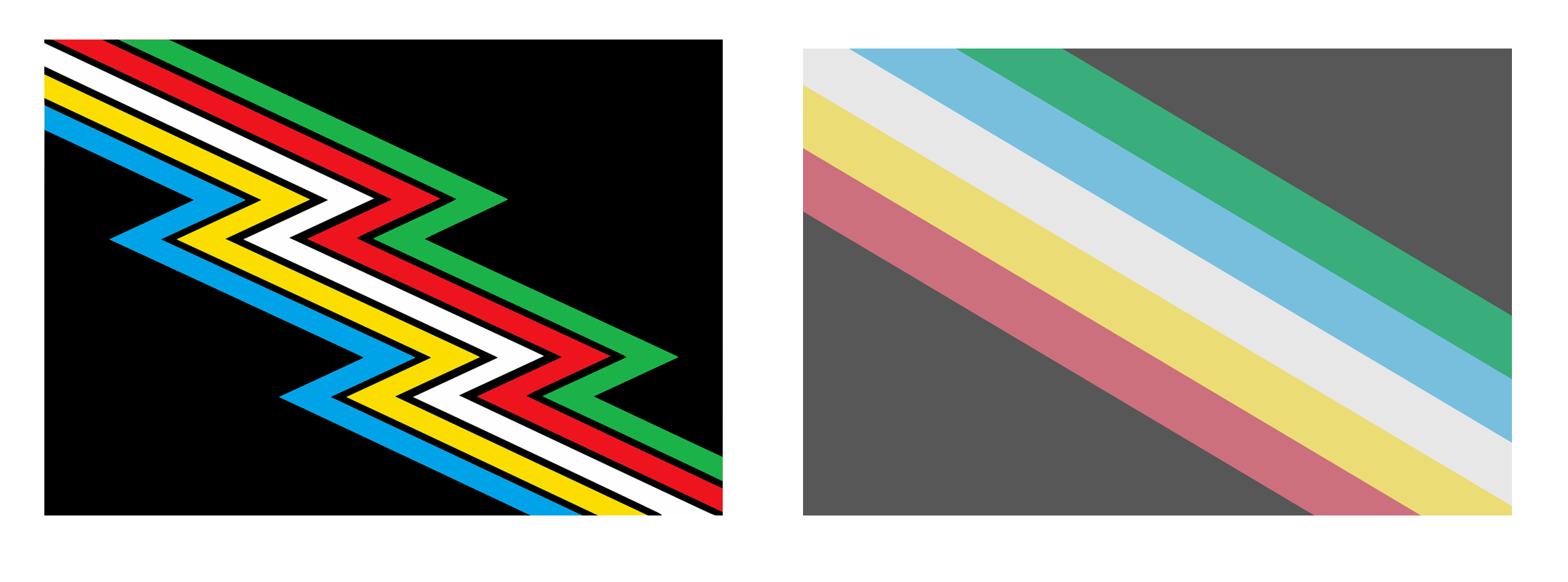All Library locations will be closing early Wednesday, November 26 at 5 p.m. and will reopen Saturday, November 29.

The landmark Americans with Disabilities Act (ADA), signed into law by President George H.W. Bush on July 26, 1990, prohibits discrimination based on abilities and protects the rights of individuals with disabilities in areas such as transportation and building accessibility. For Disability Pride Month, the Library offers a collection of books, films, and other resources that celebrate the rich array of stories and experiences of people living with disabilities.
Exhibition
Johnny B.: I'm Built Different continues through July 6 in Central Library's Mountain Gallery. John Buice, known as Johnny B., was a beloved, long-term resident artist at Imagine That!, an arts-based day program in the Crossroads Arts District for individuals with developmental disabilities. The exhibition of Johnny B’s works ties into the Big Read 2025 selection: Rebekah Taussig’s Sitting Pretty: The View from My Ordinary Resilient Disabled Body.
Lists
Read
Explore a range of titles that reflect the voices of those with disabilities – memoirs, historical accounts, fiction, young adult novels, and more.
Watch
Online video streaming service Kanopy includes a collection of documentaries, dramas, comedies, and other films that showcase the experiences and voices of people with disabilities. All are free to watch with your library card.
Past Events
Big Read 2025: Sitting Pretty
From March 29 through May 23, 2025, the Library celebrated the joys and challenges of physical, human existence through Rebekah Taussig’s memoir Sitting Pretty: The View from My Ordinary, Resilient, Disabled Body. Programming across the Library, including a special edition of Friday Night Family Fun, explored what a radically inclusive world can look like.
Shelf Life: A Big Read Storytelling Event
As part of Big Read 2025, a free, city-wide reading and public engagement initiative of the National Endowment for the Arts, a popular show-and-tell storytelling event hosted by writer and director David Wayne Reed returned on May 1, 2025, with a focus on soma, or the body, exploring how we live in our bodies, how we relate to our physical selves, and how our bodies carry us through the world.
'Sitting Pretty': A Big Read Conversation
Rebekah Taussig lost the use of her legs as a toddler during cancer treatment. Growing up in a wheelchair, she didn’t see herself reflected in TV shows, ads, books, or movies. But what she did see was disability depicted as a frightening deformity, held up as inspiration for those in “typical” bodies, or even as an indicator of some kind of innocence or magical power – and none of that represented her lived experiences.
On April 15, 2025, Taussig talked to the Library’s Kaite Stover about the eight essays in her book, Sitting Pretty: The View from My Ordinary, Resilient, Disabled Body, that largely deal with Taussig’s shifts in self-perception and her relationship with the world around her. They also discuss the public consequences of ignoring differences in ability; everyone, she says, lives in a body with limitations, so conversations about accessibility benefit a far larger population than most imagine.
Blindness Community Changemakers: An Alphapointe Film Premiere and Conversation
Former New York Gov. David Paterson, blind since childhood, was the subject of the first episode of Alphapointe’s Foresight, a video and podcast series that explored the past, present, and future of vision loss through discussions with changemakers in the blindness community. On July 22, 2022, the Library hosted a premiere screening of a portion of the series and a discussion about the challenges and successes of living with vision loss.
About the Disability Pride Flag

Created by artist Ann Magill, the Disability Pride Flag first entered into the public domain in 2019. Magill's original design featured a lightning bolt motif and bright colors on a black background. But after receiving feedback from disability communities, she redesigned elements of the flag in 2021. Among the changes were more muted colors to reduce eye strain and allow those with some vision impairment to better distinguish between the colors and hues. The new flag incorporates elements symbolizing different aspects of the disability experience.
- All six "standard" flag colors: Signifies that disability communities span borders between states and nations
- Black Field: Mourning for victims of ableist violence and abuse
- Diagonal Band: "Cutting across" the walls and barriers that separate the disabled from society
- Red Stripe: Physical disabilities
- Gold Stripe: Neurodivergence
- White Stripe: Invisible and undiagnosed disabilities
- Blue Stripe: Psychiatric disabilities
- Green Stripe: Sensory disabilities